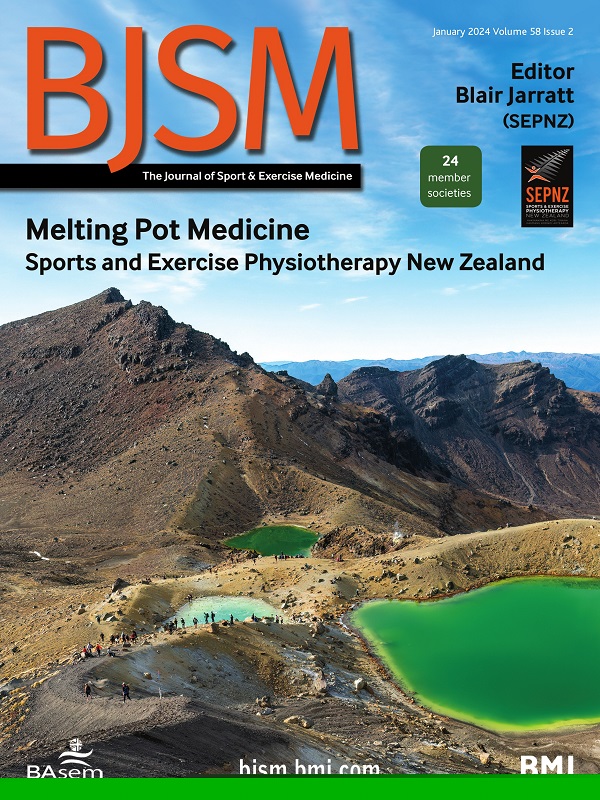Improving treatment in patients scheduled for total knee arthroplasty: the role of preoperative low-load blood flow restricted resistance training(PhD Academy Award)
IF 11.6
1区 医学
Q1 SPORT SCIENCES
引用次数: 0
Abstract
In this PhD project, we prospectively included 86 patients with knee osteoarthritis (OA) who were scheduled for a total knee arthroplasty (TKA). The project was divided into two phases: Phase 1, compared the relationship between lower limb sit-to-stand power (STS Power) and maximal isometric knee extensor strength (knee extensor maximal isometric voluntary contraction (MVC)), respectively, with objective measures of physical function and patient-reported outcomes. Phase 2, investigated the effectiveness of preoperative low-load blood flow restricted resistance training (BFR-RT) compared with usual preoperative medical care on postoperative measures of physical function, lower limb strength and patient-reported outcomes obtained 3 and 12 months after TKA. The number of TKA procedures due to knee OA is rising globally, with ~20% of the patients perceiving insufficient postoperative outcomes. Moreover, patients undergoing TKA demonstrate a lower level of physical function 1 year postoperatively compared with healthy peers.1 Interestingly, performing preoperative heavy-load resistance strength training (HL-RT) to improve preoperative lower limb strength in patients with knee and hip OA scheduled for joint replacement surgery has demonstrated to enhance postoperative physical function.2 However, a previous study3 reported that about 25% …改善计划接受全膝关节置换术患者的治疗:术前低负荷血流受限阻力训练的作用(博士学院奖)
在这个博士项目中,我们前瞻性地纳入了 86 名计划接受全膝关节置换术(TKA)的膝关节骨性关节炎(OA)患者。该项目分为两个阶段:第一阶段,比较下肢坐立力量(STS Power)和最大等长膝关节伸肌力量(膝关节伸肌最大等长自主收缩(MVC))分别与身体功能客观测量指标和患者报告结果之间的关系。第二阶段研究了术前低负荷血流限制阻力训练(BFR-RT)与术前常规医疗护理相比,对TKA术后3个月和12个月的身体功能、下肢力量和患者报告结果的影响。在全球范围内,因膝关节 OA 而接受 TKA 手术的人数不断增加,其中约有 20% 的患者认为术后效果不佳。1 有趣的是,对计划接受关节置换手术的膝关节和髋关节 OA 患者进行术前重负荷抗阻力力量训练(HL-RT)以改善术前下肢力量,已被证明可增强术后身体功能。
本文章由计算机程序翻译,如有差异,请以英文原文为准。
求助全文
约1分钟内获得全文
求助全文
来源期刊
CiteScore
27.10
自引率
4.90%
发文量
217
审稿时长
3-8 weeks
期刊介绍:
The British Journal of Sports Medicine (BJSM) is a dynamic platform that presents groundbreaking research, thought-provoking reviews, and meaningful discussions on sport and exercise medicine. Our focus encompasses various clinically-relevant aspects such as physiotherapy, physical therapy, and rehabilitation. With an aim to foster innovation, education, and knowledge translation, we strive to bridge the gap between research and practical implementation in the field. Our multi-media approach, including web, print, video, and audio resources, along with our active presence on social media, connects a global community of healthcare professionals dedicated to treating active individuals.

 求助内容:
求助内容: 应助结果提醒方式:
应助结果提醒方式:


